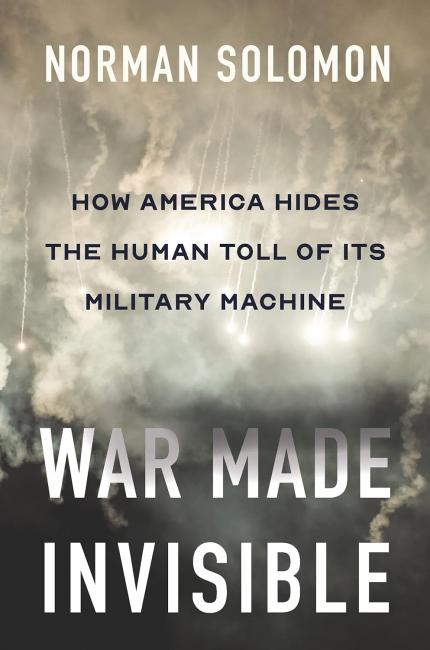Earlier this year, Brown University’s Costs of War project calculated that the US-led ‘war on terror’ has led to nearly one million people being killed due to direct violence, many more being killed by indirect causes connected to the conflict, and 38 million people being displaced.
In his new book, US writer and activist Norman Solomon highlights how the government, military and media hide the murderous impact of US military interventions from the US public.
Relying largely on secondary sources, he focuses in on the US’s shift away from boots on the ground to a reliance on air power, which significantly reduces the political costs for the government.
‘For the American [TV] networks, “war” means troops on the ground in harm’s way, not use of lethal force remotely by the Pentagon,’ media researcher Andrew Tyndall notes, with the volume of coverage reduced accordingly.
More broadly, Solomon explains, ‘the tenor and volume of US media coverage have routinely hinged on who is doing the killing and who is being killed. When American armed forces are inflicting the carnage, the chances of deeply sympathetic coverage of the killed, wounded, and bereaved are greatly diminished.’
However, ‘when the killers are adversaries of the US government, the media floodgates of compassion and human connection open wide.’ The avalanche of emotive news reporting following Russia’s invasion of Ukraine amply proves his point.
While I would have liked a more detailed analysis of the propaganda mechanisms that create this mass ignorance, War Made Invisible is nevertheless a very readable reality check about post-9/11 US foreign policy. Thoroughly referenced for those who wish to drill down further, it’s full of illuminating quotes and facts. For example, professor David Vine is quoted as saying the US ‘has at least three times as many overseas bases as all other countries combined.’
UK peace activists will know the book’s thesis very much applies to the UK.
For example, in 2013 the Guardian published details of a 2012 ministry of defence discussion paper which examined how to assuage ‘casualty averse’ public opinion. Suggestions included the greater use of mercenaries, drones and special forces, with the loss of elite soldiers seen as having a reduced impact on the public and press.
Shockingly, a 2013 UK ComRes poll commissioned by a group of media activists, and supported by Noam Chomsky, found that 59 per cent of respondents thought fewer than 10,000 Iraqis had died as a result of the Iraq War. In contrast, a study published in PLOS Medicine journal the same year estimated 500,000 Iraqis had died because of the war.
I would have also liked to see Solomon highlight how activists and social movements are often able to raise awareness of the reality of their government’s military aggression – and, under the right conditions and with a herculean effort, even help curtail or stop a war.
With Israel decimating the Gaza Strip as I write this review, this critical task is as urgent as it ever has been.


